There’s no doubt Mike Flanagan is a prolific filmmaker, but we explore what it is that makes him such an influential force in the genre.
When it comes to the horror genre in film, you won’t find a person whose output over the last decade can match that of Mike Flanagan (at least in the United States).
He has pushed forth a consistent number of films that are exclusively in the horror genre. What makes his output more incredible is that he has been the writer and editor as well for his films (IMDb). As a result, he is able to maintain near-complete control of his work; what you see on screen is his vision from start to finish. This level of autonomy can be compared to the New Hollywood era in the 1970s where directors had the most control over their films (Lewis, 282).
He’s enjoyed a fair amount of critical success along the way. You know you’re doing something right when your lowest-rated movie on Rotten Tomatoes stands at 63% (rottentomatoes.com).
Flanagan is a fascinating director who has a few consistent elements across his films that one can notice.
This article will discuss the narrative structure, themes, and the mise-en-scéne that are present across the filmography of Mike Flanagan.
(Note: there will be plot spoilers for Flanagan’s films throughout.)
NARRATIVE STRUCTURE
The films of Mike Flanagan have a traditional three-act structure. He never really deviates from it, but he does add more complex elements to some of his films.
Hush (2016) doesn’t really deviate or add to a three-act structure, but a film like Oculus (2013) has two separate storylines playing out at once.
The third act shows the present timeline of the two siblings, Kaylie and Tim, trying to combat the cursed mirror, while the past timeline shows how previous traumatic events in their childhoods due to the same cursed mirror led them to where they are in the present. It’s a third act that includes character background information as a major reveal in the climax.
This rather complex narrative trick is employed by Flanagan in more than one property.
In the episode Two Storms from The Haunting of Hill House (2018), there are two separate stories going on at once involving the Crain family in the present and the past. The present storyline takes place at a funeral home for Nell’s viewing, but a past storyline plays out at the same time where the Crain family tries to deal with a fallen chandelier and no electricity.
Both timelines include a heavy thunderstorm and involve the loss of Nell (in the past timeline, Nell disappears in the house). It’s a tall order to put this all together in an hour-long episode, but Mike Flanagan is able to juggle these two storylines through the use of expert match cuts.
A match cut is where you go from one shot to the next and the composition of the shot doesn’t really change. This formalist technique is used in multiple movies and shows from Mike Flanagan. Since Mike Flanagan is the editor of his own films, it’s especially important to look at this choice.
He uses the technique throughout the episode The Two Faces, Part One, from The Haunting of Bly Manor (2020). Match cuts are used to switch between multiple timelines to give background information on the narrative and the characters Peter Quint and Rebecca Jessel (how they met, why they’re at the manor, etc.). It shows how their past relationship impacted the present characters and the manor itself.
This technique is also used in Gerald’s Game (2017) and Oculus. Just like Bly Manor, these two films use the technique to flashback to a different time period to provide more character development. For Gerald’s Game, it shows Jessie’s traumatic past due to her dad sexually assaulting her.
The same purpose is present in Oculus. The composition of a shot could include a dead plant in the frame, and the film would match cut to a flashback of another dead plant being watered by the mother of Kaylie and Tim, Marie Russell.
Both films use this technique to keep the multiple timelines connected together. It allows for a smoother transition between timelines and helps the audience follow the film more easily because of it.
What one will notice in the works of Mike Flanagan is a pattern of characters seeing other characters that no one else can.
This appears in just about every Mike Flanagan film/show, but not for the same reason or purpose.
For the film Hush, the lead character, Maddie Young, would see and talk to herself during the climax of the movie as a way for her to strategize an escape strategy against the serial killer.
In The Haunting of Hill House, the father, Hugh Crain, would talk to his deceased wife, Olivia Crain, as a way for him to cope with difficult situations.
And in Doctor Sleep, Danny Torrence would see ghosts and spirits from his past at the Overlook Hotel, as well as characters he’s interacted with that have died. This device is used as both a narrative device and character development.
For Before I Wake (2016), the parents, Jessie and Mark Hobson, would see their dead child after their foster child, Cody, would dream them; whereas in Bly Manor, Henry Wingrave would see a more evil version of himself as a projection of his guilt for his brother (Dominic), and sister-in-law’s (Charlotte) death.
The former example provides a narrative reason for the parents’ actions, specifically when Jessie would put up photos of her dead son so that Cody could dream him. The latter example provides a reason why Henry doesn’t visit the manor and why he has turned to alcoholism.
This projection of guilt is also used in Mike Flanagan’s feature film debut, Absentia, when Tricia continues to see a disfigured version of her husband seven years after his disappearance. She feels guilty for moving on.
THEMES
Guilt is a major theme that appears again and again in the films and shows of Mike Flanagan.
Bly Manor is filled with themes of guilt and regret. As mentioned earlier, Henry Wingrave seeing and interacting with a more twisted version of himself after Charlotte and Dominic die in a plane crash on their way to their second honeymoon. The deceased couple went on this excursion after it was revealed that Henry had an affair and child with Charlotte. His infidelity caused their demise in his eyes, which also meant his daughter lost her mother.
In the same series, Dani continues to see her deceased ex-fiancé, Edmund, after he is run over by a truck in front of her. She broke off the engagement right before it happened, and she blames herself because he left in a hurry to get away from her.
For Doctor Sleep, Danny Torrence sees the woman he slept with and her child as corpses. He left them for dead after the woman overdosed.
In all these examples, the characters were able to fight back against these projections by forcing themselves to confront their past trauma and learn to move on.
Dani burns her fiancé’s glasses and looks at him directly (she’s only seen him through reflections previously), Henry goes to see his daughter and nephew, Flora and Miles, one year after Dominic and Charlotte died, and Danny can control his Shining better by sobering up. After getting clean, Danny uses his power to comfort dying patients in the hospice he works at.
Trauma is another theme that is ever-present in Mike Flanagan’s work, specifically family trauma.
This goes all the way back to his feature film debut Absentia (2011).
The two sisters are reunited for the first time in years; the older sister, Tricia, is pregnant and trying to find her missing husband, while her sister Callie is a recovering drug addict. Their family history is only hinted at; the father appears to be absent and the mother is not sane.
Characters with a troubling family history are sprinkled throughout the filmography of Mike Flanagan. The two lead characters, Kaylie and Tim, in Oculus were orphaned after their father, Alan, killed their mother Marie. Tim ended up shooting Alan to protect himself and Kaylie.
The Zander family in Ouija: Origin of Evil (2016) are still reeling from the loss of the patriarch of the family, Roger. When the family realizes that the youngest daughter, Doris, can contact whom they believe to be Roger; the matriarch, Alice, uses her to try and connect with Roger.
There’s also The Haunting of Hill House where the five Crain siblings were traumatized by the one summer where they lost their mother Olivia at the house.
Confronting one’s traumatic past is always a major turning point in Mike Flanagan’s work.
As mentioned above, The Haunting of Hill House follows the five Crain siblings after the events at Hill House where their mother Olivia died. The results varied between the siblings: drug addiction, exploitation of family trauma for a book, and graduate school.
The episode Two Storms was briefly discussed earlier where all the siblings in the present timeline were in the same room with their father, Hugh, for Nell’s viewing.
It was the first time they were all together in years. The night deteriorates as the lights flicker and Nell’s haunting presence is felt. While that is going on, the youngest brother, Luke, is fighting addiction. And the oldest daughter, Shirley, is angry at her husband, and her living sister, Theo, for taking the money from the oldest brother’s book royalties, Steven. Shirley saw the book as an exploitation of her family and taking the money was an act of betrayal.
Steven’s biggest conflict is with Hugh because he blames him for Olivia’s death. Hugh has only blamed the house for all the issues that the family has endured; he hasn’t been transparent with the children as to how their mother died, or at least the children find it ridiculous.
They are only able to find closure in the end when they return to the house to save Luke, and each sibling has their own traumatic events that they confront (Steven with his estranged wife, Shirley with the person she had an affair with, etc.).
The themes of confronting the past come up again and again in Mike Flanagan’s films and shows.
Two other films that deal with family trauma are Doctor Sleep and Gerald’s Game. Besides the commonality that both these films are based on Stephen King’s books, they both also show the lead characters suppressing their traumatic past.
In Doctor Sleep, Danny Torrence learns from a young age how to imprison the ghosts from the Overlook Hotel that continue to haunt them. This was his way of protecting himself from the ghosts of his past. He later becomes a homeless alcoholic in his adult life to keep his “Shining” at bay. But he recovers from his addiction after seeking out AA, and he begins to use his powers again. He confronts his past by returning to the Overlook Hotel, where he has a conversation with his abusive and alcoholic father, Jack Torrence, and finally destroys the Overlook Hotel with him in it.
In Gerald’s Game, Jessie is handcuffed to the bed by her husband Gerald to reenact a sexual fantasy of his. Jessie soon becomes uncomfortable and kicks Gerald off. After their argument, Gerald has a heart attack. There’s no one around to help Jessie get out of the predicament. While trapped, she begins to see hallucinations of herself and her husband. These visions become a way for her to cope and strategize how to survive and possibly escape.
During her ordeal, she’s suddenly forced to confront a traumatic moment from her past that she has suppressed. She revisits the day when her father sexually assaulted her by forcing her to sit on his lap while he masturbated. He then manipulates her to never tell anyone, which she obliges. Jessie made so many excuses to protect herself from dealing with what really happened (because he never directly touched her, he never “technically” sexually assaulted her).
She’s finally forced to relive this memory and face the impact it has had on her life. Facing this repressed memory, however, does give her an idea of how to escape, albeit in the most gruesome fashion by slicing her wrists with glass to slip out of the handcuffs. She ultimately accepts what happened to her in her past and begins using her story to help other sexual assault victims.
Another commonality in Mike Flanagan’s work is his inclusion of lore. Every haunted area or artifact in his films has a history that can date back hundreds of years. Lore is utilized in his first feature film, Absentia, where Callie notices a high level of disappearances that have been documented in that same tunnel where her brother-in-law, Daniel, disappeared.
In Oculus, the mirror is shown to have a long history of taking other lives well before Kaylie, and Tim were attacked by it. Though Alan and Tim committed the killings, the mirror was the cause of the deterioration of the family that lead to their deaths. Kaylie researched the history of the mirror and everyone that bought it. All the owners eventually died of a gruesome death.
The lore that Mike Flanagan explores the most in his filmography is the history of specific haunted houses.
There are four pieces from Mike Flanagan’s filmography that include a haunted house: Ouija: Origin of Evil, The Haunting of Hill House, Doctor Sleep, and The Haunting of Bly Manor.
Ouija: Origin of Evil is interesting because the title wants you to think that the Ouija board is an evil artifact.
The Ouija board in this film, however, is just a board game that was used as a tool by the house. The house that the Zander family occupies in the film has a history of human experimentation and torture. The bodies are literally buried in the house. What the spirits haunting the house saw was an opportunity to possess the family by communicating through the Ouija board. In the end, the board was a McGuffin for the haunted house to attack the family.
In The Haunting of Hill House, the long history of the house, which includes all the people that died there, is important for the series — as those spirits haunt the family that occupies the space.
Mr. Dudley shares the tales of the house and talks about why he and his wife never stay in the house for too long. He tells the story of Poppy Hill, who lived in the house and was considered insane. Poppy communicates with Olivia, telling her that her husband Hugh was taking the children away from her. This leads to Olivia’s death. Poppy also incapacitates Luke when he tries to burn the house down.
For Doctor Sleep, it all goes back to the Overlook Hotel. That’s the site where the spirits haunted the Torrence family in The Shining, and those same spirits continue to haunt Danny Torrence in adulthood. Like the previous haunted houses mentioned, the Overlook Hotel has a history of violent deaths.
The twins that we see in The Shining (1980) were murdered by their father with an ax. Jack Torrence becomes crazy while trapped in the hotel and he tries to murder his wife Wendy, and Danny. Wendy and Danny escape as Jack freezes to death, and his spirit becomes part of the hotel. What’s also interesting about this film is how the spirit of someone who dies at the hotel stays at the hotel.
That’s something we see in Ouija when the evil spirits are trapped in the house, as well as Hill House where spirits are continually claimed by that house (Nell, Hugh, and Olivia are part of that house because they died there).
This idea comes into play in the narrative of The Haunting of Bly Manor.
In Bly Manor, the lore of the house is the Lady of the Lake that haunts it, who was previously the heiress of the manor, Viola Willoughby-Lloyd.
She is murdered in the manor by her sister, Perdita, and she is trapped in the chest filled with her nicest clothes meant only for her daughter. When Perdita opens the chest, Viola’s spirit murders her. Uneasy about the chest that led to Perdita’s death, Viola’s husband, Arthur, throws it in the lake with her spirit still trapped inside. That lore sets the ground rules as to why the spirits of those who die at Bly Manor are trapped there.
Lore plays a major role in this series. It’s told through a narrator as if it were a campfire ghost story; the eighth episode in the series, The Romance of Certain Old Clothes, is shot in black and white about how the manor originally became haunted. It’s a scary story that gives the manor historical context.
The main antagonist of the series, Peter Quint, is trapped at the Manor because he was killed there. His goal is to try to find a way to escape the grounds before his face is erased like the other spirits (the facial features of Perdita and Viola are gone). Peter Quint and his girlfriend, Rebecca Jessel are trying to escape the manor by inhabiting the bodies of Miles, and Flora.
They try to escape the rules of the lore. Their spirits along with the others that died there are finally released only when Dani allows the Lady of the Lake to inhabit her body.
The lore in this series as well as Ouija, Doctor Sleep, and Hill House provides development for the main characters (Danny Torrence, The Crain family), as well as provides the action and reasoning for the action in the narrative.
mise-en-scéne
A word that can be used to describe the settings in Mike Flanagan’s films is isolating. With the exception of Absentia, all of the works of Mike Flanagan take place in an isolated home or location.
Hush, a film that doesn’t have the usual Mike Flanagan themes or characters, takes place in a house in the middle of the woods. There are no nearby neighborhoods for Maddie Young.
In both Bly Manor and Hill House, the large estates are in a remote location away from the town. Even for films like Ouija and Before I Wake, there’s no evidence that the houses are in a remote location, but they are shot in such a way that the characters feel isolated from the rest of the world.
In Doctor Sleep, the lead characters don’t live in isolated locations, but the main location of note in the climax is the Overlook Hotel, a very much isolated location on top of a mountain.
This of course is not unique only to Mike Flanagan. Plenty of horror films take place in an isolated location (Dracula, Hereditary, etc.), which helps to heighten the fear in the audience. There’s no one near the family to save the victims from the monsters; they’re on their own.
There is some evidence regarding the importance of color in Mike Flanagan’s work.
For Bly Manor, the color red could symbolize death. In the scenes where Hannah prays in the manor church, she lights four red candles. Three of those candles are for Charlotte, Dominic, and Rebecca Jessel. The fourth candle is later to be revealed as her own when she realizes that she died. She’s pushed down the well wearing a red sweater and red nail polish. Throughout the present timeline, she is seen wearing some sort of red clothing (sweater, pants, etc.), but in flashbacks when she was still alive, her clothing was more varied.
Red could symbolize the death of a character, specifically Hannah.
The color red is also noticeable in Gerald’s Game. When flashing back to the day Jessie was sexually assaulted by her dad during the eclipse, the screen slowly turns to a red filter as the deed is being done. It turns to a full red when the sun is completely covered. The filter appears a couple of times throughout the film when Jessie flashes herself back to that day to see herself, and when she hallucinates the monster she’s been seeing throughout the film.
Mike Flanagan doesn’t use the color red the way M. Night Shyamalan uses it in The Sixth Sense (1999), but it still plays a pivotal role.
For Flanagan, mise-en-scéne isn’t used to convey a “signature style”. Rather, it is self-contained and relevant to each particular film (instead of being used to make it clear who directed the film). Bly Manor and Hill House are rich with mise-en-scéne as the houses are filled with Victorian decorations that add to the personalities of the aforementioned haunted houses. The Overlook Hotel looks the exact same in Doctor Sleep as it did in The Shining. If anything, it has a preserved quality since Wendy and Danny escaped decades prior.
Flanagan’s more recent films have dealt with different time periods (Ouija in the 1960s, as well as Bly Manor in the 1980s and mid-17th Century), and those films are designed and edited to give them the feel of the time period. With that said, there’s not a constant reminder of the time period in an obtrusive way. For a genre like horror that’s not traditionally subtle, Flanagan’s design choices are more understated than one might expect.
While mise-en-scéne is vital in his work, it’s not the defining characteristic.
His signature as a director usually comes in through the editing and themes of the story.
The majority of his films are usually not strictly linear; he utilizes match cuts and jump cuts to fill in character background and development. The themes of his films for the most part are consistent. They usually deal with family trauma, regret, and accepting one’s past.
A Mike Flanagan film isn’t just filled with jump scares (although you’ll certainly get those in Ouija and Oculus). Instead, they are filled with family conflict and characters fighting their addictions, or running away from their past.
Story and characters come first for Flanagan. His films are more than just typical genre offerings; they explore real family conflict and offer an empathetic view of trauma and addiction.
Mike Flanagan did an interview with Esquire Magazine back in 2016 that really represents his style as a director. These quotes stood out the most:
Mike Flanagan primarily works in the horror genre, but that’s nearly the last thing on his mind when creating a film.
WRITTEN BY RICHARD SANDERS
Citations
Show MoreLewis, Jon. “A Hollywood Renaissance .” American Film: A History , 1st ed., W.W. Norton & Company, 2008, pp. 282–282.
“Mike Flanagan.” IMDb, IMDb.com, www.imdb.com/name/nm1093039/?ref_=nv_sr_srsg_0.
“Mike Flanagan.” Rotten Tomatoes, www.rottentomatoes.com/celebrity/mike_flanagan.
Flanagan , Mike, director. Hush. Netflix, 2016, www.netflix.com/title/80091879.
Flanagan , Mike, director. Oculus . Hulu, Relativity Media, 2013, www.hulu.com/movie/oculus-782b17b8-86c0-499b-b960-70763d1407a0?dl=false.
The Haunting of Hill House. Created by Mike Flanagan , season 1, episode Two Storms, Netflix , 2018.
The Haunting of Bly Manor. Created by Mike Flanagan , season 2, episode The Two Faces, Part One, Netflix , 2020.
Flanagan , Mike, director. Gerald’s Game. Netflix, 2017, netflix.com/title/80128722.
Flanagan , Mike, director. Before I Wake. Netflix, Relativity Media, 2016, netflix.com/title/80002667.
Flanagan , Mike, director. Doctor Sleep. Warner Bros. Pictures, 2019.
Flanagan, Mike, director. Absentia. Phase 4 Films, 2011.
Flanagan, Mike, director. Ouija: Origin of Evil. Universal Pictures , 2016.
Kubrick , Stanley, director. The Shining. Warner Bros., 1980.
Shyamalan, M. Night, director. The Sixth Sense. Buena Vista Pictures Distribution , 1999.
Schager, Nick. “How This Horror Director Is Reinvigorating the Genre By Returning It to Its
Roots.” Esquire, 19 Oct. 2016, www.esquire.com/entertainment/movies/q-and-a/a49744/mike-flanagan-interview-ouija-origin-of-evil/.
Corrigan, Timothy. A Short Guide to Writing About Film. 7th ed., Pearson, 2010.


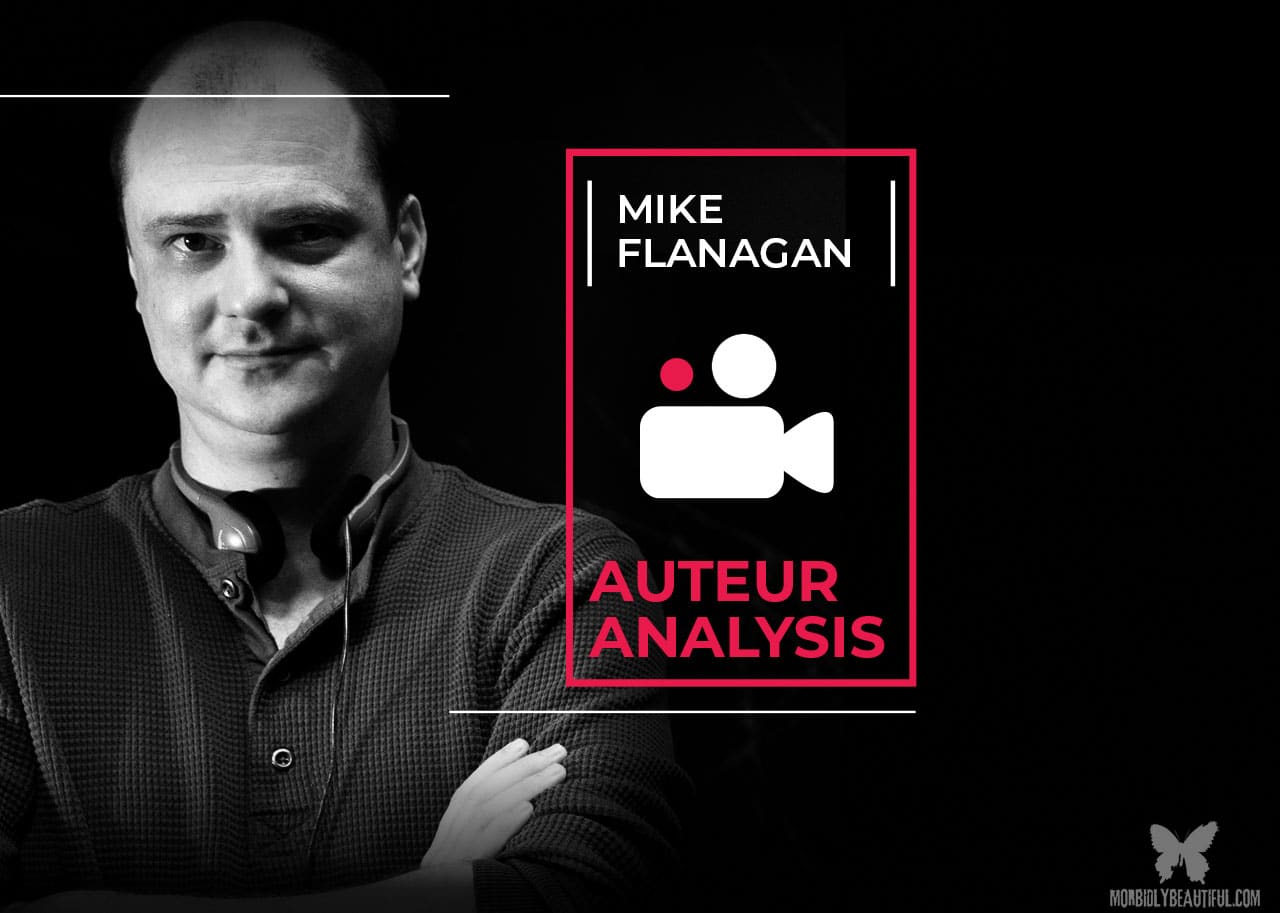







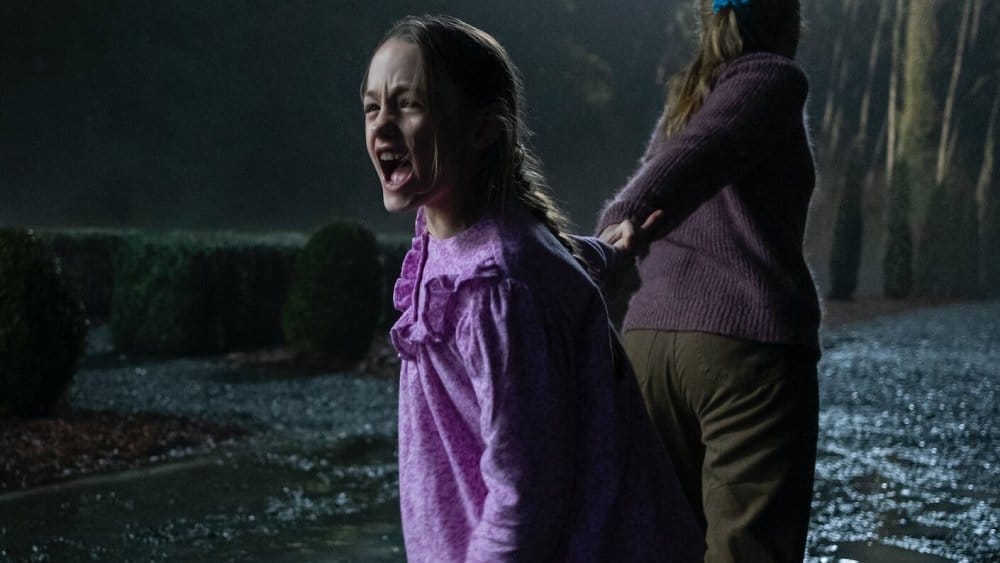


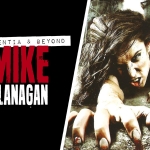
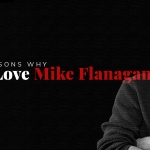
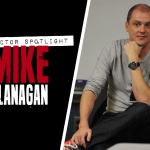



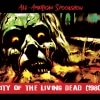




Follow Us!